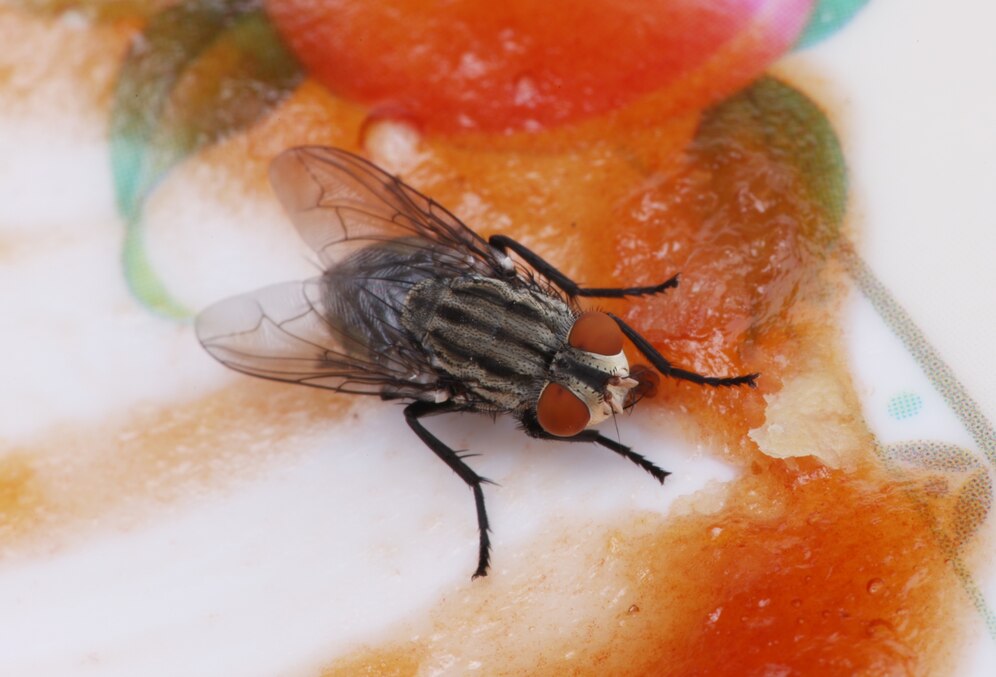Table of Contents
The Annoying Invasion: Delving into the Mystery of House Fly Infestations
Flies buzzing around your home can be a major annoyance, but have you ever wondered why your house seems to be a magnet for these pesky insects? In this article, we will uncover the pervasive mystery behind why your home is infested with flies and explore possible reasons for their unwelcome presence.
1. Poor Waste Management: A Hotbed for Fly Breeding
One of the primary reasons your house may be infested with flies is poor waste management. Flies are attracted to decaying organic matter, and if you have open garbage bins or improperly sealed trash bags, you are creating an ideal breeding ground for these insects. Flies lay their eggs in rotting material, allowing them to reproduce and perpetuate the infestation.
To address this issue, it is crucial to adopt proper waste management practices. Make sure to use tightly sealed garbage bins and regularly dispose of waste in a timely manner. Additionally, consider using trash bags that are specifically designed to deter flies. By taking these measures, you can significantly reduce the presence of flies in your home and prevent further infestations.
2. Cracks and Openings: A Welcome Invitation for Flies
Flies are experts at squeezing through even the tiniest openings. If your house has cracks in the walls, gaps in windows, or poorly sealed doors, you are inadvertently inviting flies inside. These tiny insects can easily find their way through these openings and establish their presence in your living spaces.
To prevent fly infestations resulting from cracks and openings, it is essential to conduct a thorough inspection of your home. Seal any gaps or cracks in walls, windows, and doors to deny flies easy access. Weatherstripping can be a useful tool to ensure that your doors and windows are properly sealed. By taking these preventative measures, you can make your home less attractive to flies and keep them from invading your living areas.
3. Moisture and Dampness: A Breeding Heaven for Flies
Moisture and dampness not only create an uncomfortable environment for humans but also attract flies. Damp areas, such as leaky pipes, standing water, or damp basements, provide the perfect breeding conditions for flies. These insects require moist environments to lay their eggs and reproduce.
To combat fly infestations caused by moisture and dampness, it is crucial to address any underlying issues. Fix any leaks in your plumbing system, ensure proper drainage around your property, and regularly check for standing water. Additionally, maintaining proper ventilation and reducing humidity levels in areas prone to dampness, such as basements, can help deter flies from breeding. By tackling moisture problems, you can create an environment that is less inviting to flies and minimize the risk of infestations.
4. Unhygienic Habits: A Playground for Flies
Unhygienic habits and neglecting cleanliness can contribute to a fly-infested house. Flies are attracted to food residues, spills, and unclean surfaces. If you leave dirty dishes unwashed, food crumbs scattered around, or neglect regular cleaning, you are essentially creating an open invitation for flies to thrive.
To prevent fly infestations resulting from unhygienic habits, it is important to adopt good hygiene practices. Wash dishes promptly, keep countertops and surfaces clean, and promptly clean up any spills or food residues. Storing food in sealed containers and regularly emptying and cleaning garbage bins can also help deter flies. By maintaining a clean and hygienic living environment, you can significantly reduce the chances of a fly infestation.
5. Pest Hotspots: Neighbors in the Fly Trap
Sometimes, a fly infestation in your house may be a result of a larger issue in your neighborhood. If nearby properties or areas in your vicinity have a high presence of flies, it can increase the likelihood of these insects finding their way into your home. Flies can easily travel from one area to another, especially if there are favorable conditions for them to breed and thrive.
In such cases, it is important to communicate with your neighbors and work together to address the issue. Collaborate on implementing proper waste management practices, such as using sealed garbage bins and disposing of waste correctly. By taking a collective approach, you can reduce the overall fly population in your neighborhood and minimize the risk of fly infestations in your own home.
In conclusion, a house infested with flies can be a frustrating and unsanitary problem. By understanding the reasons behind the infestation, such as poor waste management, cracks and openings, moisture and dampness, unhygienic habits, and neighborhood factors, you can take proactive steps to prevent and eliminate fly infestations. By addressing these factors, you can regain control of your living spaces and enjoy a fly-free environment.
Photo source: freepik.com

